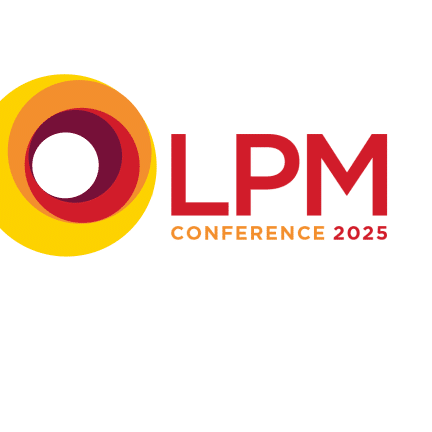
Bigger picture
A holistic perspective on law firm technology is crucial for delivering a better client experience, says Legl’s CEO, Julia Salasky.
With generative AI demonstrating that some basic legal tasks can be done by a computer, it is even more urgent for law firms to think about leaning into their main competitive moat – the relationships with their clients. As technology is beginning to commoditise some of the underlying work, it is those relationships, and the care and value that firms are able to deliver to their clients, that will continue to drive demand and give some firms a true competitive advantage. And yet this trend converges with one driven by client demands even before large language models became front of mind for professional services: LPM Frontiers research in 2023 has revealed that ‘improving the client experience’ is the top strategic priority on the boardroom agenda for 57% of SME law firms.
The same research from 2022 revealed ‘client-facing technology’ was the most popular area of focus in tech for SME law firms.
As demands on firms intensify, Legl’s CEO, Julia Salasky, says a more holistic approach to tech is the need of the hour.
“Firms traditionally view the client-facing side of their operations as isolated from internal business processes, when the reality is that complex business-related tasks – like onboarding, payments and compliance – are both client-facing, but also integral to the internal operations of the firm.” she says.
“As new technologies like AI become part and parcel of a law firm’s tech stack, client demands – for better service, for lower prices – will intensify. There’s a basic starting point for firms to reduce operational friction by consolidating their internal tech stack.”
“What we find is that, today, the tech stack of many firms is a confusing jumble of point solutions and manual processes. Not only does that increase expense for firms and add to the operational overhead of running a law firm business, but it also means that clients feel the effects of inefficiency – whether through a clunky onboarding process or delays due to internal complexity.
“Regulation is a major differentiator for law firms, as opposed to, say, a company drafting a legal letter using Chat GPT. Doing regulatory processes well can be a competitive advantage. Having streamlined processes can increase visibility, create efficiencies and reduce cost.
Full visibility has other benefits too. Businesses can benefit from real-time performance data at a firm, department and individual leve,which has tremendous benefits for resource planning.
Pinpoint the pain point
But while a holistic tech stack has the potential to create a well-oiled machine that keeps clients and employees happy, it’s hard for firms to know where to start building – especially if they have traditionally been sporadic in their approach to transformation.
“Adopting new technology doesn’t need to be complex or dramatic. We recommend starting with what is causing the most frustration or inefficiency, which differs from one firm to the next. Some firms will approach us with cashflow problems and want to speed up their payment collection, others are frustrated with the time it takes to prepare for an SRA audit, and some want to make their onboarding process more efficient and compliant. It’s important to start with the most pressing challenge.”
The key is to keep going once the initial problem is solved, to join those efficiencies up with other business processes. This is where the selection of tech provider becomes critical – it’s important to partner with softwarethat has the capacity to meet your needs, but equally one that will support an ongoing journey of transformation rather than solving one problem and moving on to the next client.
“Capabilities are objective, but the culture of a provider will determine whether it is able and willing to evolve quickly to the needs of its customers.” Salasky explains that Legl is also working on AI-based products that enable firms to create better workflows, and to better understand their client risks, as one example of the way the company is constantly innovating its software, in commitment to better solving law firms’ operational problems.
Flexibility is king
This is Legl’s arena – the company’s entire approach is designed to be completely adaptive to a firm’s processes. According to Salasky, the first port of call is to really get to know a firm, which means understanding each and every step and person involved from the initial point of contact with a new client to the conclusion of their matter. “We’re not just a software provider – the goal is to find where we can add value.
“Firms typically have one or two pieces of core technology such as a practice management or document management system – focused on specific functions. This creates a rigid structure that needs layers of integration to accommodate any kind of flexibility.
“We work to that, and to replicate firms’ existing processes, to provide no-code workflows that form building blocks of any business process – whether that’s client-facing, internal or both. The idea is to view a law firm as a holistic business that hinges on its clients’ and people’s interaction with its processes – so technology should bend to their requirements rather than the other way around.”
An example is the dichotomy between client onboarding and payment collections. “Most firms see these as distinct processes, but they can easily be linked up using our workflows. Firms could collect money into their client accounts during the onboarding process, which has significant cashflow benefits, but also provides the client with a streamlined and beautiful experience.”
Salasky reports that while firms use Legl’s workflows for a clearly defined set of use cases such as onboarding, payments or compliance, many will also want to create other processes – such as collecting net promoter scores from clients upon matter completion, or due diligence and compliance checks of third parties, for instance – which can all be done by anyone with the click of a button.
This malleability of digital tools, which will only increase as artificial intelligence and other new technologies evolve, is the future, according to Salasky. The ultimate objective is to give clients a better experience, while also freeing up lawyers from easily streamlined administrative tasks so they can deliver more value in their legal work.



